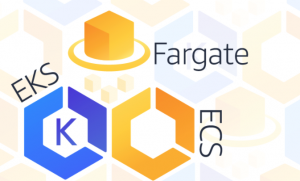
In past, if you have been used to deploying your cloud-native apps or microservices hosted within a Docker container on AWS ECS, you may have also been required to do some of the following:
- Choose server types in relation with provisioning AWS EC2 instances
- Configure appropriately to scale the cluster as and when required
- Optimize cluster packing
In short, with AWS ECS, until the launch of AWS Fargate, you were required to manage the infrastructure and related configuration in relation with scalability etc.
With AWS Fargate, Focus in on Designing and Building Apps
With AWS Fargate, all that is required to be done are some of the following:
- Package your application in containers
- Specify the CPU and memory requirements
- Define networking and IAM policies
- Launch the application
- and, that is it!!!
Why use Fargate Launch Type rathar than EC2 Launch Type?
If are not looking to do some of the following, AWS Fargate Launch Type (rather than EC2 Launch Type) is the way to go for deploying your next cloud-native apps (microservices) on AWS ECS / AWS EKS. Note that below given aspects are related with EC2 launch type.
- Have server-level, more graular control over the underlying infrastructure. In this relation, you would be required to decide which type of server to use.
- Manage a cluster of servers including provisioning and patching and scaling the cluster of servers.
- Schedule placement of containers on the servers
- Decide on how many containers to run in a cluster to optimize utilization
- Configure when to add or remove servers from a cluster.
- Coefficient of Variation in Regression Modelling: Example - November 9, 2025
- Chunking Strategies for RAG with Examples - November 2, 2025
- RAG Pipeline: 6 Steps for Creating Naive RAG App - November 1, 2025
I found it very helpful. However the differences are not too understandable for me